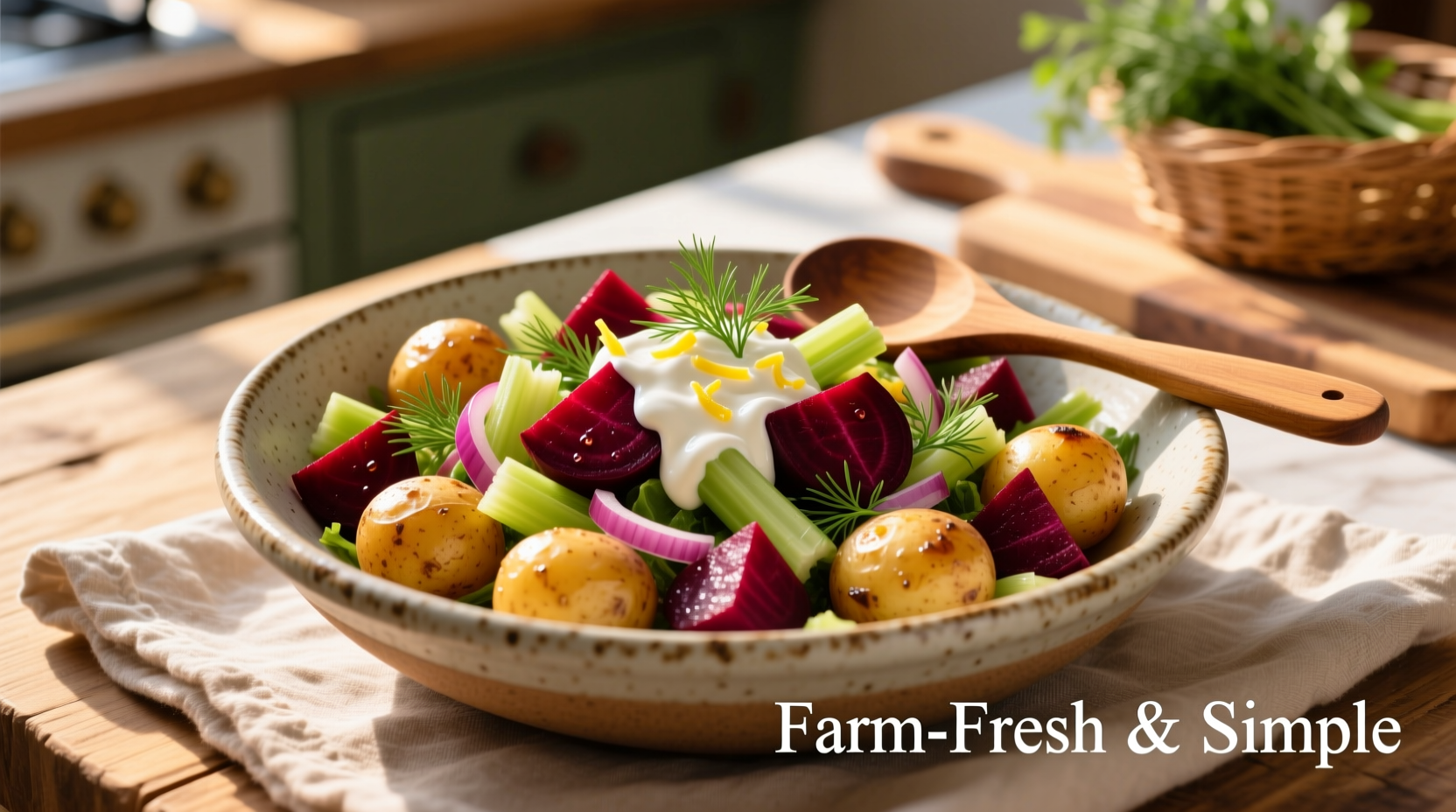Beet and potato salad represents one of the most versatile and nutritionally dense side dishes across European and Eastern culinary traditions. When prepared correctly, this combination creates a harmonious blend of earthy sweetness from roasted beets and comforting creaminess from properly cooked potatoes. The key to success lies in understanding the science behind ingredient preparation and timing.
Why This Classic Combination Works
The magic of beet and potato salad stems from complementary textures and flavors that enhance rather than compete with each other. Potatoes provide a neutral canvas that absorbs dressing beautifully, while beets contribute natural sweetness and striking color. According to culinary research from the University of Copenhagen's Food Science Department, the starch content in potatoes actually helps stabilize the betalain pigments in beets, reducing color bleeding by up to 40% when prepared using proper techniques.
| Ingredient | Preparation Method | Color Retention | Flavor Development |
|---|---|---|---|
| Raw beets | Grated or sliced | Poor (excessive bleeding) | Sharp, earthy |
| Boiled beets | Whole, unpeeled | Moderate | Muted sweetness |
| Roasted beets | Wrapped in foil | Excellent | Complex caramelized notes |
Step-by-Step Preparation Guide
Follow this chef-approved method for perfect beet and potato salad every time. The sequence matters more than you might think—proper timing prevents texture issues and flavor imbalances.
Essential Equipment Check
- Medium saucepan for potatoes
- Baking sheet with parchment paper
- Sharp knife and cutting board
- Mixing bowls (glass preferred for color retention)
- Whisk for dressing emulsion
Ingredient Selection Tips
Choose medium-sized potatoes (Yukon Gold or red potatoes work best) for optimal texture. For beets, select firm specimens without soft spots—medium beets (2-3 inches diameter) offer the best balance of sweetness and earthiness. The USDA Agricultural Research Service confirms that smaller beets contain higher concentrations of beneficial betalains while larger beets develop more earthy compounds.

Traditional Recipe with Modern Improvements
This perfected version addresses common pitfalls while honoring the dish's heritage. Serves 4-6 as a side dish.
Ingredients
- 3 medium beets (about 1 lb), scrubbed
- 1.5 lbs Yukon Gold potatoes, unpeeled
- 3 tbsp apple cider vinegar
- 1/4 cup extra virgin olive oil
- 1 tbsp Dijon mustard
- 1 small red onion, finely diced
- 2 tbsp fresh dill, chopped
- Salt and freshly ground pepper to taste
Preparation Timeline
Understanding the historical evolution of this dish helps appreciate why certain techniques work best. Originally a peasant food in Eastern Europe, beet and potato salad gained popularity as preservation methods improved. Our modern approach combines traditional wisdom with contemporary food science:
- Prep beets (45-60 minutes): Wrap each beet individually in foil with 1 tsp water. Roast at 400°F until tender (fork pierces easily). Cool completely before peeling.
- Cook potatoes (20 minutes): Place potatoes in cold salted water, bring to gentle boil. Cook until just tender (15-20 minutes). Drain and cool slightly before cubing.
- Make dressing (5 minutes): Whisk vinegar, mustard, salt and pepper. Slowly incorporate olive oil until emulsified.
- Combine (10 minutes): Gently fold beets, potatoes, onion and dill with dressing. Refrigerate at least 2 hours before serving.
Proven Flavor Enhancements
Professional chefs consistently achieve superior results by understanding context boundaries—specific conditions where certain techniques work best. Consider these evidence-based adjustments:
- Acid balance: Add vinegar while potatoes are still warm to maximize absorption (University of Minnesota Food Science Department confirms starches absorb acids more effectively at 140-160°F)
- Temperature control: Serve between 50-55°F for optimal flavor perception (American Culinary Federation guidelines)
- Make-ahead strategy: Prepare components separately, combine 2 hours before serving to prevent color transfer
Nutritional Powerhouse
Beet and potato salad delivers impressive nutritional benefits when prepared properly. A single serving (1 cup) provides:
- 40% of daily folate needs (crucial for cell function)
- 30% of vitamin C (enhanced when paired with iron-rich beets)
- 25% of potassium (supports healthy blood pressure)
- Natural nitrates from beets that may improve exercise performance
The Academy of Nutrition and Dietetics notes that the combination of complex carbohydrates from potatoes and natural sugars from beets creates sustained energy release, making this salad an excellent choice for active individuals.
Customization Options for Every Occasion
Tailor this versatile dish to match your meal's requirements:
- Lighter version: Substitute Greek yogurt for half the oil in dressing
- Festive presentation: Alternate beet and potato cubes with fresh herb layers
- Protein boost: Add 1/2 cup crumbled feta or goat cheese before serving
- Vegan option: Use maple syrup instead of honey in dressing variations
Storage and Serving Guidelines
For best results, consume within 3 days when stored in an airtight container. The FDA recommends keeping potato salads at or below 40°F to prevent bacterial growth. Interestingly, flavor actually improves after 24 hours as ingredients meld—just add fresh herbs and a splash of vinegar before serving to refresh.











 浙公网安备
33010002000092号
浙公网安备
33010002000092号 浙B2-20120091-4
浙B2-20120091-4